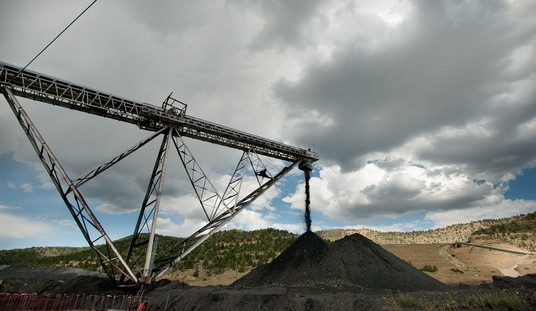In trying to measure the effects of guns on society — not just the Americans — it pays to be careful about what we are describing. The Washington Post explains that there is no direct relation between the number of firearms in circulation and the number of ordinary gun-related murders.
Most Americans incorrectly think gun-murder rates have gotten worse, not better … To be explicit: This is wrong. Data from the FBI breaks out reported murders by type of weapon, showing a drop in the raw count of firearm murders since a peak in 1993. ….
But remember, too, that the question asked about the murder rate — that is, the number of murders as a function of the population. In that regard, the drop is even steeper. In 1994, the FBI data suggest a rate of about 6.2 firearm murders per 100,000 people. In 2017, the rate was 3.38 murders, up from the 2014 low in which the rate was less than half of that in 1994.
Ordinary murder is apparently driven by more than the weapon. An observed reduction in the propensity of Americans to shoot each other offset the greater availability of weapons. The federal assault weapons ban and its subsequent removal without detectable effect showed how weak a factor it was by itself.
Research published by John Lott in 1998 found no impact of these bans on violent crime rates. … In 2004, a research report commissioned by the National Institute of Justice found that if the ban was renewed, the effects on gun violence would likely be small and perhaps too small for reliable measurement, because rifles in general, including rifles referred to as “assault rifles” or “assault weapons”, are rarely used in gun crimes. That study, by the Jerry Lee Center of Criminology, University of Pennsylvania, found no significant evidence that either the assault weapons ban or the ban on magazines holding more than 10 rounds had reduced gun murders.
For a variety of reasons having to do with social and economic factors, the firearms murder rate went down. What the current debate really seems to be about is whether rapid-fire guns increase the frequency of a special kind of crime called mass shootings. However, this is a somewhat artificial category. Mass shootings are a subset of the larger phenomenon of mass killings, sometimes referred to as rampage killings. “A rampage involves the (attempted) killing of multiple persons at least partly in public space by a single physically present perpetrator using (potentially) deadly weapons in a single event without any cooling-off period.”
It is one killer, one place, one time, many victims in a setting outside of war. The data collected on this type of event notes the type of weapon used, which is not always a firearm. It is mass killings that one would want to reduce, not just mass shootings.
What differentiates rampage killings from regular homicide is they were (and still are) by comparison extremely rare. Wikipedia lists only 1,850 incidents worldwide in recorded history, which is very small compared to the number of ordinary homicides. While the record probably leaves out many incidents it should be, by order of magnitude, correct at least from the 1800s. (I converted the incidents into a queryable database, excluding familicides, home intruders and the “other” category to obtain the following charts in a process to be described next post).

What happened in the mid-1960s?
Rampage killings really start taking off after the mid-1960s. Perhaps the most surprising thing is how much of that spike comes from religious-ethnic and school shootings (which are counted separately from geographical divisions).

If general rampage killings are purely a function of weapons availability, they should be reflected across the jurisdiction of those geographical areas. The fact that they spike in certain categories (religious-ethnic and schools) suggests it is higher than average in certain places due in part to the killer’s efforts to act out some pathological or political message related to these settings.
Because rampage killers are rare, they may be quite different from the ordinary murderer. If the mass killer decides to commit mayhem, first the weapon selection is driven by the plan. Availability is one, but only one of the factors. The rampage data reflect the choice. While bladed weapons are less deadly than firearms, the really devastating attacks are carried out using vehicles or arson. Wikipedia has a category for these called other.
| Year | W | Killed | Additional notes |
|---|---|---|---|
| 1978 | E | 134 | Died in the explosion of ship 160, which he caused |
| 1989 | E | 110 | Sentenced to 10 consecutive life sentences for the bombing of Avianca Flight 203 |
| 1990 | A | 87 | Sentenced to 25 years to life imprisonment for causing the Happy Land fire |
| 1990 | V | 127 | Died in the crash of Xiamen Airlines Flight 8301, which he caused |
| 1995 | E | 168 | Sentenced to death and executed for the Oklahoma City bombing Killed 3 unborn children |
| 1997 | V | 103 | Pilot; Died in the crash of SilkAir Flight 185, which he was suspected of causing |
| 1999 | V | 216 | Pilot; died in the crash of EgyptAir Flight 990, which he was suspected of causing |
| 2001 | E | 89 | Sentenced to death and executed |
| 2002 | A | 111 | Died in the crash of China Northern Airlines Flight 6136, which he caused |
| 2003 | A | 192 | Sentenced to life imprisonment for causing the Daegu subway fire |
| 2009 | A | 112 | Unsolved |
| 2014 | V | 238 | Pilot; died in the crash of Malaysia Airlines Flight 370, which he was suspected of causing |
The reason the high end is non-gun is simple. Firearms, even assault weapons, are inherently limited by the need to change magazines, which is why buddy pairs are considered the smallest tactical unit so that one can maintain fire while the other is reloading. Fire, aerial vehicles, explosives and poison are not similarly constrained. The recent Kyoto animation studio attack killed more people than the El Paso and Dayton shootings combined.
It is sometimes argued that gun control can force rampage killers downward to knives, but there is nothing to prevent them from trading up to a deadly plan and a box of matches. Any strategy to reduce mass killings must consider psychological and network factors as much as object control (like banning knives).
The discussion on rampage killing might benefit from examining the following propositions:
- Are rampage killers different from ordinary killers?
- Was the spike from the mid-1960s driven by accelerants other than weapons availability, explaining why gun murder rates per 100,000 went down but mass killings of all sorts went up.
- To what extent does school and religious-ethnic data suggest the spike is driven by contentious politics? Unlike regular murderers who strive to conceal their identity, rampagers often leave elaborate manifestos, a video statement, social media declarations, or even live feeds to memorialize their deeds. They want the world to know who they are.
- Was TV and social media the accelerant at least in part? Is the lack of it why places like Africa appear to have slower growth in this type of event?
While this discussion of the subject is far from scientific, it may throw light upon the problem from a novel angle. The next Belmont Club post will examine the relationship between civilian weapons ownership and that other form of mass killing: extrajudicial killing. What can go wrong if civilians don’t have weapons?
Follow Wretchard on Twitter
Tipjar at wretchard.com
Support the Belmont Club by purchasing from Amazon through the links below.
Books:
The Scandal of Money: Why Wall Street Recovers but the Economy Never Does, by George Gilder. In this book, Gilder unveils a radical new explanation for America’s economic woes and shows how a small cabal of elites have manipulated currencies and crises to stifle economic growth and crush the middle class.
Scipio Africanus: Greater Than Napoleon, by B.H. Liddell Hart. The classic biography of Rome’s greatest general and the victor over Rome’s greatest enemy, Hannibal.
On Desperate Ground: The Marines at The Reservoir, the Korean War’s Greatest Battle, by Hampton Sides. This is Sides’s version of this epic clash at the frozen shores of the Chosin Reservoir, based on fresh research, unpublished letters, declassified documents, and interviews with Marines and Koreans who survived the siege. Faced with probable annihilation, and temperatures plunging to 20 degrees below zero, the surrounded, and hugely outnumbered, Marines fought through Chinese enemy forces with ferocity, ingenuity, and nearly unimaginable courage as they marched their way to the sea.
Ottolenghi Simple: A Cookbook, by Yotam Ottolenghi. 130 streamlined recipes packed with Ottolenghi’s signature Middle Eastern–inspired flavors, all simple in at least (and often more than) one way: made in 30 minutes or less, with 10 or fewer ingredients, in a single pot, using pantry staples, or prepared ahead of time for brilliantly, deliciously simple meals.
For a list of books most frequently purchased by readers, visit my homepage.
Did you know that you can purchase some of these books and pamphlets by Richard Fernandez and share them with your friends? They will receive a link in their email and it will automatically give them access to a Kindle reader on their smartphone, computer or even as a web-readable document.
The War of the Words, Understanding the crisis of the early 21st century in terms of information corruption in the financial, security and political spheres
Rebranding Christianity, or why the truth shall make you free
The Three Conjectures, reflections on terrorism and the nuclear age
Storming the Castle, why government should get small
No Way In at Amazon Kindle. Fiction. A flight into peril, flashbacks to underground action.
Storm Over the South China Sea, how China is restarting history in the Pacific.









Join the conversation as a VIP Member